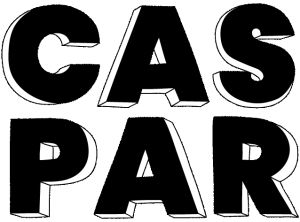This website uses cookies so that we can provide you with the best user experience possible. Cookie information is stored in your browser and performs functions such as recognising you when you return to our website and helping our team to understand which sections of the website you find most interesting and useful.
Privacy Overview
Strictly Necessary Cookies
Strictly Necessary Cookie should be enabled at all times so that we can save your preferences for cookie settings.
If you disable this cookie, we will not be able to save your preferences. This means that every time you visit this website you will need to enable or disable cookies again.
3rd Party Cookies
This website uses Facebook Pixel and Google Analytics to collect anonymous information such as the number of visitors to the site, and the most popular pages.
Keeping this cookie enabled helps us to improve our website.
Please enable Strictly Necessary Cookies first so that we can save your preferences!






What are the main differences between woven and knit fabrics?
Differences between woven and knit fabrics
Present since the stone age, fabrics had about 100.000 years to develop according to our needs. This is why today we have warm and cold weather clothes, work and gym clothes, sleeping and swimming clothes. Tents, umbrellas and windbreaker jackets are made of one fabric, and curtains, pillowcases and tablecloths of another. In the modern world there is an abundance of different fabrics made of natural and artificial materials, each of them holding different properties and serving different purposes.
Alas, why are some shirts more stretchable than others? Why do some dresses have that edge that keeps curling up? If you take a close look into the threads that make up your clothes, you will get the answer to this question. Threads reveal the main difference between two types of fabric – woven and knit.
Clear and firmly woven lines
The threads inside a woven fabric are divided into warp and weft, and are interlaced in different shapes: canvas, atlas, twill etc. Wovens, unlike knits, must have sewn-in edges that will keep them from falling apart. The most widely known examples of these fabrics are denim, muslin, velvet, flannel and chiffon – known for their easy manoeuvrability.
Unlike knits which are used in clothes that adhere to the body, wovens are firm, non-stretchable fabrics that maintain their shape. This makes them ideal for suits, shirts, jackets and home textile. You will recognize these clothes by their buttons, zippers, snap buttons and other additions that are used to facilitate their use.
In other words, if you are looking for clear lines and bold silhouettes, choose clothes made of woven fabrics.
Knit fabrics – eternal symbols of comfortability
If you have ever seen your mother or grandmother knit, you will know how knit fabrics are made – one thread that is interlaced, resulting in little loops that form a braid pattern. The structure of these loops is responsible for the knits’ main characteristic – stretchability. Have you ever seen a knit piece of clothing on a hanger in a store? We hope not, because this can result in over-stretching, and in the end the fabric is deformed.
Besides those warm, knit woollen sweaters, knit pattern is also found in textiles such as fleece, combed polyester, interlock and jersey cotton. Due to their stretchability, these textiles are ideal for underwear, shirts, leggings, hats, socks, pullovers and cardigans, and we especially like them because they don’t wrinkle as easily as wovens.
When should you choose each fabric?
When will you choose a piece of clothing made of woven fabric, and when will it be knit? It all depends on their purpose. We will hardly do sports in stiff denim pants, just like we won’t use bed linen that is made of stretchable interlock that will separate from the bedding.
The dress we plan on wearing for the entire day, first at work and later when having coffee with friends, would probably be quite wrinkled if it were made of woven fabric, while with knits you won’t even see the difference. Choose the fabric that will suit your wishes, but keep in mind that you need to follow care instructions carefully. This way your favourite pieces of clothing will be well-kept for a long time.
Choose the fabric that will suit your needs, and then come up with a creative and unique design. We will make sure it is transferred onto the fabric perfectly. ☺
Related Posts
How To Choose the Perfect Fabric for Your DIY Project?
What does DIY sewing at home look like? Casual clothes Fashion accessories Kids’ and baby clothes Fashion clothing Home decor Have you found your fabric? Take a peek at our Fabric Types page and find the one that suits you!
How can you take proper care of our apparel and fabrics?
How many times have you destroyed your new piece of clothing by improper care? Perhaps you washed the white shirt with red socks. Maybe you ironed a polyester shirt on cotton settings, or washed it on 60°C. In order to prevent further mourning over your favourite pieces of clothing, we present to you a brief …
Differences between natural and synthetic fabrics
Natural and synthetic fabrics – Main differences Have you ever wondered why is that dear cotton shirt of yours so comfortable to sleep in, but not quite appropriate for gym practice? Or how come that stuffed winter jacket dries faster than the light spring one? The answers to these questions lie in the type of …